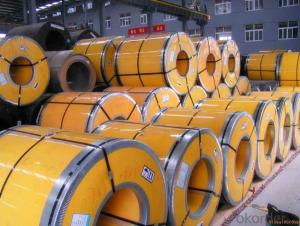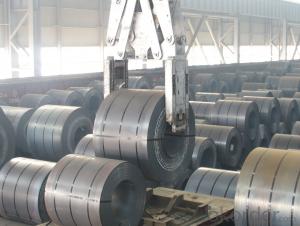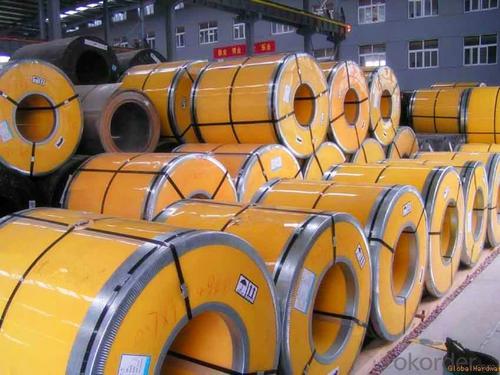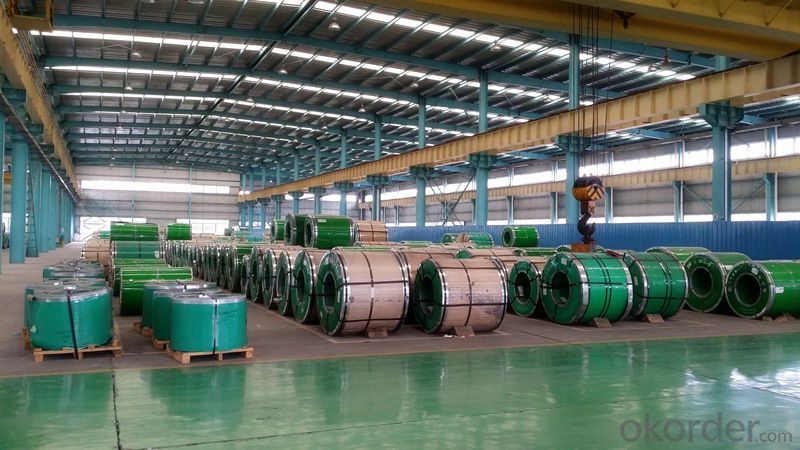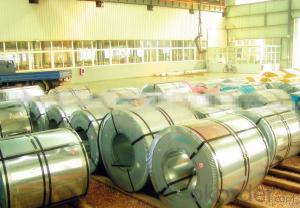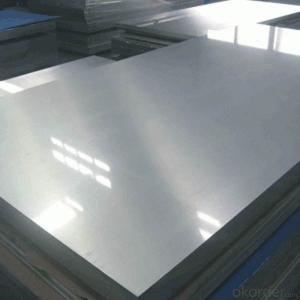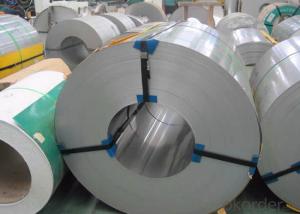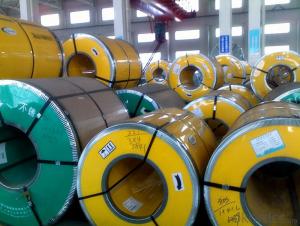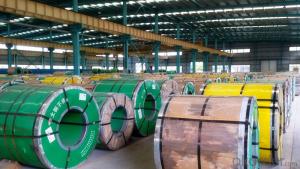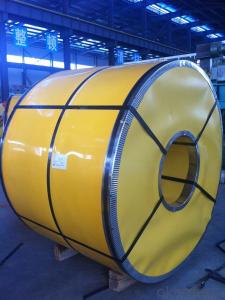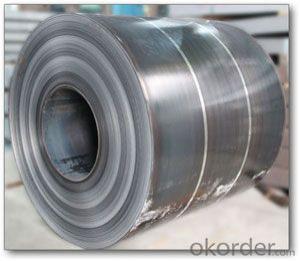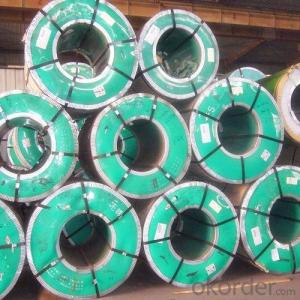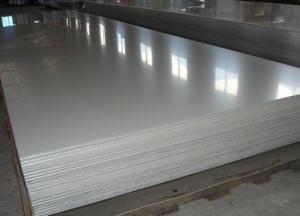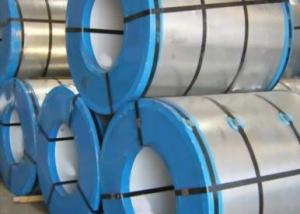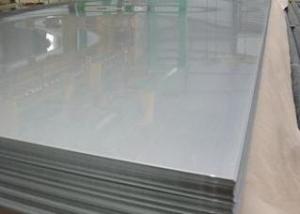Stainless Steel Coil Hot Rolled 304
- Loading Port:
- China Main Port
- Payment Terms:
- TT OR LC
- Min Order Qty:
- -
- Supply Capability:
- 5000 m.t./month
OKorder Service Pledge
OKorder Financial Service
You Might Also Like
Grade: | 300 Series | Standard: | JIS,AISI,ASTM,GB,DIN,EN etc | Thickness: | 2.5mm, 3.0mm, 4.0mm |
Width: | 550mm-1500mm | Length: | according to weight | Place of Origin: | China (Mainland) |
Brand Name: | CNBM | Model Number: | 304 | Technique: | Hot Rolled |
Application: | industry, construction, furniture, repairing | Certification: | MTC | Finishing: | NO.1 |
Market: | globle area | Packaged: | wooden and bags in cases as standard | Payment: | TT & LC |
Delivery time: | 15 days | MOQ: | 50 tons | Advantage: | prime quality, competitive price |
Profession: | hot rolled | Charactor: | stainless steel coils | Material/Grade: | 304 |
Hot Rolled Stainless Steel Coil 304
Specifications
1.surface:NO.1
2.standard:JIS, AISI, GB, DIN, EN etc
3.width: 0.55m, 0.65m, 1.0m, 1.22m, 1.5m, 2m or requirement
ASTM A240 304
(%):C=0.07, Mn=2.00, P=0.045, S=0.030, Si=0.075, Cr=17.5-19.5, Ni=8.0-10.5, N=0.10
Physical Properties
Tensile strength σb (MPa) ≥ 520
the conditions yield strength σ0.2 (MPa) ≥ 205,
elongation δ5 (%) ≥ 40
Reduction of ψ (%) ≥ 50,
hardness: ≤ 187
HB; ≤ 90
HRB; ≤ 200H
- Q: Are stainless steel strips suitable for pharmaceutical equipment?
- Yes, stainless steel strips are suitable for pharmaceutical equipment. Stainless steel is a commonly used material in the pharmaceutical industry due to its excellent corrosion resistance, durability, and hygienic properties. It is easy to clean, resistant to bacteria growth, and can withstand high temperatures and harsh chemicals typically used in pharmaceutical processes. Stainless steel strips can be used for various applications in pharmaceutical equipment, including manufacturing vessels, storage tanks, mixing equipment, conveyors, and packaging machinery. The material's strength and reliability make it suitable for maintaining the integrity and cleanliness required in pharmaceutical facilities, ensuring product safety and quality.
- Q: Do stainless steel strips require any special maintenance?
- Special maintenance is required for stainless steel strips. Although stainless steel is resistant to corrosion and staining, it is not completely immune to these problems. It is necessary to clean regularly in order to remove dirt, dust, and other substances that may potentially cause corrosion over time. To clean stainless steel strips, mild soap or detergent and warm water can be used, followed by rinsing and drying with a clean cloth. It is important to avoid using abrasive cleaners or materials that may scratch the surface of the stainless steel. Furthermore, it is recommended to refrain from using steel wool or other abrasive tools for cleaning. By performing regular maintenance and cleaning, the longevity and appearance of stainless steel strips can be ensured.
- Q: Can stainless steel strips be electroplated?
- Yes, stainless steel strips can be electroplated. Electroplating is a process in which a thin layer of metal is deposited on the surface of an object using an electric current. While stainless steel is already corrosion-resistant, electroplating can enhance its appearance, provide additional protection against wear and tear, and improve its conductivity. The process involves immersing the stainless steel strip in a bath containing a solution of metal ions and applying an electric current, causing the metal ions to be attracted and deposited onto the surface of the strip. This can be done with various metals, such as gold, silver, nickel, or chromium, to achieve different aesthetic or functional properties.
- Q: Can stainless steel strips be used in nuclear power applications?
- Certainly, stainless steel strips are applicable in nuclear power uses. Due to its exceptional resistance to corrosion, high-temperature strength, and low magnetic permeability, stainless steel is highly favored in the nuclear industry. It finds widespread use in reactor components, fuel storage containers, heat exchangers, and piping systems. The versatility of stainless steel strips lies in their ease of being molded into different shapes and sizes, making them ideal for various nuclear power applications. Moreover, stainless steel's capability to endure radiation damage and its limited interaction with nuclear fuel further enhance its suitability for nuclear power uses.
- Q: What are the recommended cleaning agents for 111 stainless steel strips?
- Depending on the specific requirements and conditions of the stainless steel strips, the choice of cleaning agents recommended for 111 stainless steel strips may vary. However, there are some commonly suggested options for cleaning stainless steel, such as mild soap or detergent, non-abrasive cleaners, and specialized stainless steel cleaners. For regular cleaning of stainless steel strips, it is usually sufficient to use a mild soap or detergent along with warm water. This solution can be gently applied to the surface using a soft cloth or sponge. It is crucial to avoid using abrasive cleaners that contain bleach or chlorine, as they can harm the finish of the stainless steel. In case of tougher stains or stubborn dirt, non-abrasive cleaners specifically designed for stainless steel can be utilized. These cleaners are typically available in spray or liquid form and can be applied to the surface and wiped off with a clean cloth. It is essential to carefully follow the instructions provided by the manufacturer of the specific cleaner being used. Furthermore, there are specialized stainless steel cleaners available in the market that are formulated to eliminate fingerprints, smudges, and other marks from stainless steel surfaces. These cleaners are often available as sprays or wipes and can be used as needed to maintain the appearance of the stainless steel strips. It is always advisable to test any cleaning agent on a small and inconspicuous area of the stainless steel strips before applying it to the entire surface. This precaution ensures that the cleaning agent does not cause any damage or discoloration to the stainless steel. Additionally, it is important to adhere to the manufacturer's instructions for both the cleaning agents and the stainless steel strips to achieve optimal cleaning results and prevent any surface damage.
- Q: Can stainless steel strips be used in outdoor applications?
- Certainly! Outdoor applications can utilize stainless steel strips. Due to its exceptional resistance to corrosion, stainless steel is an excellent choice for outdoor environments that may encounter moisture, humidity, and other elements. Moreover, stainless steel possesses remarkable durability and strength, making it suitable for a range of outdoor applications, including construction, signage, and equipment. Regardless of whether stainless steel strips are employed for decorative purposes or functional use, they are capable of withstanding harsh outdoor conditions and delivering long-lasting performance.
- Q: Can stainless steel strips be heat treated?
- Stainless steel strips are indeed capable of undergoing heat treatment. This particular process serves to modify the physical and mechanical characteristics of metals, including stainless steel. The purpose behind heat treating stainless steel strips can encompass a range of objectives, such as enhancing hardness, strengthening, improving resistance to corrosion, or adjusting ductility. The heat treatment process typically involves subjecting the stainless steel strips to a specific temperature and subsequently employing a controlled cooling technique. Depending on the desired properties, various heat treatment methods can be utilized, such as annealing, quenching, tempering, or solution treatment. As a consequence of heat treating stainless steel strips, their performance can be significantly enhanced, leading to a broadened scope of applications across diverse industries, including automotive, aerospace, construction, and manufacturing.
- Q: How are stainless steel strips made?
- Stainless steel strips are manufactured through a process known as cold rolling. This involves passing a stainless steel coil through a set of rollers at room temperature, which gradually reduces the thickness and increases the length of the coil. Initially, the stainless steel coil is unwound and cleaned to remove any dirt or impurities. It then goes through a series of rolling mills, where the thickness is progressively reduced. Each mill consists of two or more rollers that exert pressure on the metal, causing it to elongate and become thinner. The process is repeated several times until the desired thickness is achieved. As the stainless steel strip gets thinner, it becomes more rigid and difficult to manipulate. To counteract this, annealing is performed at specific intervals during the rolling process. Annealing involves heating the strip to high temperatures and then allowing it to cool slowly. This helps to relieve internal stresses and improve the strip's ductility. After the cold rolling and annealing stages, the stainless steel strip may undergo additional processes, such as descaling, pickling, and passivating. Descaling removes any scales or oxides that may have formed on the strip's surface during rolling. Pickling involves treating the strip with an acid solution to remove any remaining impurities. Passivation is a final step that enhances the stainless steel's corrosion resistance by forming a thin, protective oxide layer on its surface. Once all these processes are complete, the stainless steel strip is cut to the desired length and packaged for shipment or further processing. It can be used in a wide range of applications, such as automotive components, kitchen appliances, construction materials, and electronic devices, due to its excellent strength, durability, and resistance to corrosion.
- Q: What is the yield strength of stainless steel strips?
- The yield strength of stainless steel strips can vary depending on the specific grade and thickness of the material. Generally, stainless steel strips have a higher yield strength compared to other types of steel due to their composition, which includes a minimum of 10.5% chromium. However, the yield strength can range from around 200 megapascals (MPa) for low-grade stainless steel strips to over 1000 MPa for high-grade stainless steel strips. It is important to consult the manufacturer's specifications or perform material testing to determine the exact yield strength of a specific stainless steel strip.
- Q: Can 111 stainless steel strips be perforated for filtration applications?
- Yes, 111 stainless steel strips can be perforated for filtration applications. Perforating stainless steel strips allows for the creation of fine holes or slots, which are essential for filtration purposes. The size and pattern of the perforations can be customized to meet specific filtration requirements. Stainless steel is often chosen for filtration applications due to its durability, corrosion resistance, and ability to withstand high temperatures. Therefore, utilizing 111 stainless steel strips for perforation can provide an effective solution for various filtration needs.
Send your message to us
Stainless Steel Coil Hot Rolled 304
- Loading Port:
- China Main Port
- Payment Terms:
- TT OR LC
- Min Order Qty:
- -
- Supply Capability:
- 5000 m.t./month
OKorder Service Pledge
OKorder Financial Service
Similar products
Hot products
Hot Searches
Related keywords
